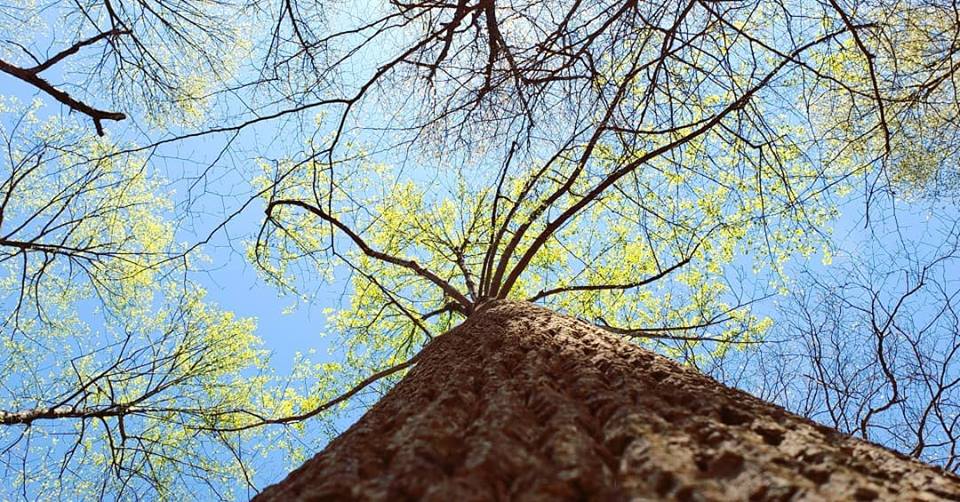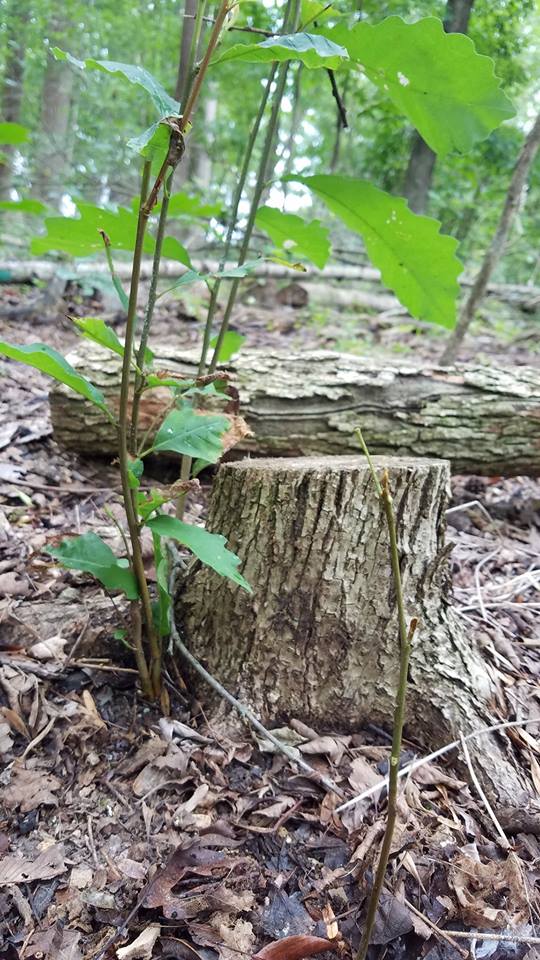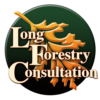
A successful timber harvest always begins with a forest management plan. Not only does it guide the landowner while making important management decisions, it qualifies landowners for preferential tax treatments, re-imbursement of the Illinois timber tax, and qualifies them for cost share programs that make forest management possible for most landowners. It is extremely important to identify management objectives before a harvest is conducted so it can be harvested correctly.
Timber harvesting is one of the most controversial and useful management techniques used in sustainable forest management. Harvesting is crucial when oak/hickory management is the primary objective and it maintains maximum productivity in future timber production. Harvesting opens the canopy, increasing sunlight levels to the forest understory and maintaining high rates of diversity. An ample amount of sunlight is the key ingredient to producing quality oak regeneration.
There are many different types of harvesting techniques that foresters use to achieve landowner objectives. Despite the techniques that are used, it is important to have the timber marked by a professional forester. A professional forester will look at every tree in the forested stand individually, and make decisions on an individual basis as to which trees to keep and which to take. There are many different aspects of a tree that a forester considers when deciding to leave or harvest. A few examples include crown characteristics, species/site compatibility, tree form, understory composition, and stocking levels (spacing).
Long Forestry practices silvicultural based timber harvesting based on long term sustainability. That simply means the timber sale is marked to achieve landowner objectives while leaving a valuable and diverse forest when the sale is done. A forester is looking at least 100 years into the future when making harvesting decisions, while also taking into account current and future markets, growth rates, and profitability. The value that a consulting forester brings to a landowner is enormous by assuring that the land is respected and treated properly, while maintaining current production without sacrificing future revenue and diversity.
Long Forestry provides support throughout the timber sale process. Our services begin with an on-site consultation with the landowner to identify objectives and to assess the forest. Next, the appropriate trees are marked to achieve the desired objectives. Each tree is measured and scaled, marked with paint, and receives a GPS reading of its exact location. Proper marking techniques and utilizing GPS capabilities allows for any tree to be identified and located for future reference. After the harvest is marked, bid packets are sent to a variety of loggers and sawmills, inviting them to bid on the sale. The bid packet contains all the required information needed for them to successfully visit the property and assess the timber, including contact information, legal descriptions, acreage, total board footage, species specific board footage, color maps, and special terms of the sale.

Once bids are received, Long Forestry provides the necessary contract to sell the timber, conducts a contract signing with the landowner and logger, and collects down payments. Prior to any harvesting activities beginning, the landowner is paid in full for their timber.
Once the timber is paid for, Long Forestry will meet on site the day logging operations begin, and will continue to monitor the logging operations until it is completed. Once operations are done, the site will receive a final assessment for quality assurance and contract compliance.
After the final inspection, Long Forestry will continue to work with the landowner to provide post harvest management and professional assistance. Click here to see how Long Forestry manages these relationships between the partners in the harvesting process.

Why Should Long Forestry Manage Your Timber Sale?
- Increased revenue from timber sales
- A certified forester looking out for you and your families interest
- Minimize damage to resources
- Maximize production and value of the forest
- Maintain diversity
- Meet your personal objectives for your land
- All trees are marked and GPS’d to prevent theft
- All trees are individually identified and scaled to maximize profits
- Tax benefits and refunds with an approved forest management plan
- Increase future value of the forest while getting benefits from them today
